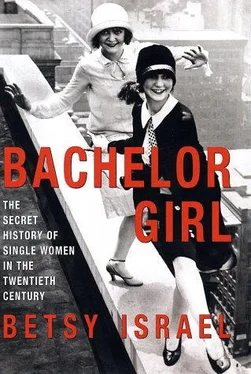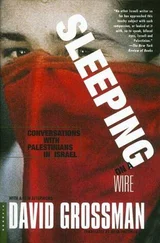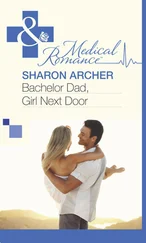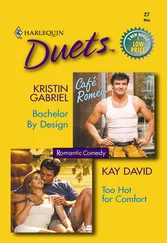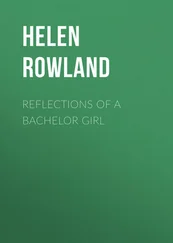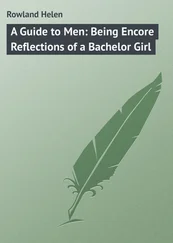Novels:
From The Folks (1934; Iowa City: University of Iowa Press, 1992), the “Margaret” section: I. “The Hidden Time,” II. “Basement Apartment,” III. “And It Had a Green Door,” IV. “After the End of the Story.” Ruth McKenney, My Sister Eileen (New York: Harcourt, Brace & World, 1938). Enormously popular novel turned play and musical film featuring two sisters who daringly take a basement apartment in the Village. Tragically, just after publication, Eileen, the pretty, adventurous sister, was killed in a car accident with her husband, Nathanael West, who was the author of Miss Lonelyhearts and other novels.
CHAPTER 3: THIN AND RAGING THINGS
Social crusaders:
Jane Addams, The Spirit of Youth and City Streets (New York: Macmillan, 1909), Twenty Years at Hull House (New York: Macmillan, 1910), and The Second Twenty Years at Hull House (New York: Macmillan, 1930). For more general information, Allen Davis, American Heroine: The Life and Legend of Jane Addams (London: Oxford University Press, 1973); the section on Hull House in Roy Lubove, The Professional Altruist: The Emergence of Social Work as a Career (Cambridge: Harvard University Press, 1965); Karen J. Blair, The Club Woman as Feminist: True Womanhood Redefined, 1868–1914 (New York: Holmes & Meier Publishers, 1980); William Dean Howells, The Minister’s Charge (Boston: Ticknor, 1887).
New women:
Judith Schwarz, The Radical Feminists of Heterodoxy (Lebanon, N.H.: New Victoria, 1982); Elaine Showalter, These Modern Women: Autobiographical Essays from the Twenties (Old Westbury, N.Y.: Feminist Press, 1978); Lila Rose McCabe, The American Girl at College (New York: Dodd, Mead, 1893); June Sochen, The New Woman: Feminism in Greenwich Village, 1910–1920 (New York: Quadrangle, 1972); Leslie Fishbein, Rebels in Bohemia (Chapel Hill: University of North Carolina Press, 1982); Ellen Trimberger, “Feminism, Men and Modern Love: Greenwich Village, 1900–1925,” in Ann Snitow, Christine Stansell, and Sharon Thompson, eds., Powers of Desire (New York: Monthly Review Press, 1983); Lewis A. Erenberg, Steppin’ Out: New York Nightlife and the Transformation of American Culture, 1890–1930 (Westport, Conn.: Greenwood Press, 1981) provides an overview of attitudes among middle-class urban kids in the teens; Terry Miller, Greenwich Village and How It Got That Way (New York: Crown, 1990); Lillian Federman, Odd Girls and Twilight Ladies: A History of Lesbian Life in Twentieth-Century America (New York: Columbia University Press, 1991); Lydia Kingsmill Commander, “An American Idea: Does the National Tendency Toward a Small Family Point to Race Suicide or Race Development?” The American Idea (1907; New York: Arno Press, 1972).
The tea-dancing modern girl, circa 1913:
Susanne Wilcox, “The Unrest of Modern Women,” Independent (July 8, 1909); “Why Educated Young Women Don’t Marry,” Independent (Nov. 25, 1909); Juliet Wilbor Tompkins, “Why Women Don’t Marry,” Cosmopolitan (Feb. 1907); “The Passing of the Home Daughter,” Independent (July 13, 1911); Margaret Deland, “The Change in the Feminine Ideal,” Atlantic Monthly (Mar. 1914); Ethel W. Mumford, “Where Is Your Daughter This Afternoon?” Harper’s (Jan. 17, 1914); “New Reflections on the Dancing Mania,” Current Opinion (Oct. 13, 1915); “Turkey Trot and Tango—A Disease or a Remedy? Current Opinion 55 (Sept. 1913); Charlotte Perkins Gilman, “The New Generation of Women,” Current History (Aug. 18, 1923).
White slaving:
“Five White Slave Trade Investigations, McClure’s (May 1910); “The White Slave Films” Outlook (Jan. 17, 1914); “The White Slave Films: A Review,” Outlook (Feb. 14, 1914); John Stanley, “Traffic in Souls: The Horror of White Slavery,” San Francisco Chronicle (Oct. 21, 1990).
The Gibson girl:
Ann O’Hagen, “The Athletic Girl,” Munsey’s (Aug. 1901); Richard Harding Davis, “The Origin of a Type of the American Girl,” Quarterly Illustrator, vol. III (winter 1895); “Charles Dana Gibson, the Man and His Art,” Collier’s (Dec. 1902); Winifred Scott Moody, “Daisy Miller and the Gibson Girl,” Ladies’ Home Journal (Sept. 1904); “Gibson Girl Would Fit in Fine in the ’90s,” Roanoke Times and World News (Apr. 9, 1995).
The flapper and 1920s youth:
Ann Douglas, Terrible Honesty: Mongrel Manhattan in the 1920s (Farrar, Straus & Giroux, 1995); Robert S. Lynd and Helen Merrill Lynd, Middletown: A Study in Con temporary American Culture (New York, Harcourt, Brace & World, 1929) was cited routinely for decades as the preeminent microcosmic view of American middle-class society; Paula Fass, The Damned and the Beautiful: American Youth in the 1920s (New York: Oxford University Press, 1977); Anita Loos, A Girl Like I (New York: Viking, 1966); John Keats, You Might as Well Live: The Life and Times of Dorothy Parker (New York: Simon & Schuster, 1970); Eric Partridge, A Dictionary of Slang and Unconventional English, 7th ed. (New York: MacMillan, 1970); A Flapper’s Dictionary, as Compiled by One of Them (Pittsburgh: Imperial, 1922).
Periodicals:
George Ade, “Today’s Amazing Crop of 18-Year-Old Roues and 19-Year-Old Vamps,” American Magazine (March 1922); “Says Flapper Aids Church,” New York Times (Sept. 2, 1922); “An Interview with a Young Lady,” New Republic (Jan. 1925); “A Doctor’s Warning to Flappers,” Literary Digest (Oct. 1926); Judge William McAdoo, “Young Women and Crime,” Ladies’ Home Journal (Nov. 1927); Zelda Fitzgerald, “Eulogy on the Flapper,” Metropolitan (1929); Ruth Hooper, “Flapping Not Repented Of,” New York Times Book Review (July 16, 1926).
The new spinster:
We know the former flapper “new spinster”—her frustrations, joys, successes, snipey conversations with wives, and wardrobe changes—from articles published in magazines and newspapers. Primary information about her sex life—and she apparently had one—is found in Factors in the Sex Life of Twenty-two Hundred Women (1935, a privately funded study, Vassar College) and in Daniel Scott Smith, The Dating of the American Sexual Revolution, part of the collection The American Family in Social-Historical Perspective, Michael Gordon, ed. (New York: St. Martin’s Press, 1973). Also Ellen Rothman, Hand and Hearts: The History of Courtship in America (New York: Basic Books, 1984); and portions of Beth L. Bailey’s highly enjoyable From Front Porch to Backseat: Courtship in Twentieth-Century America (Baltimore: Johns Hopkins University Press, 1986); there are wonderfully frightening images of the late flapper down and out in two Jean Rhys novels: After Leaving Mr. MacKenzie (New York: Harper & Row, 1931) and Quartet (1928; New York: Vintage, 1974).
Periodicals:
Grace M. Johnson, “The New Old Maids” ( Women Beautiful, May 1909); Elizabeth Jordan, “On Being a Spinster,” Saturday Evening Post (Apr. 1926); Dorothy Dunbar Bromley, “Feminist—New Style,” Harper’s (Oct. 1927); Lillian Bell, “Old Maids of the Last Generation and This,” Saturday Evening Post (Dec. 1926); “Feminism and Jane Smith,” Harper’s (June 1927); Lorine Pruette, “Should Men Be Protected?” Nation (Aug. 1927); Lillian Symes, “Still a Man’s Game: Reflections of a Slightly Tired Feminist,” Harper’s (May 1929) and “The New Masculinism,” Harper’s (June 1930); “And Now the Siren Eclipses the Flapper” New York Times Magazine (July 28, 1929); Margaret Culkin Ban ning, “The Plight of the Spinster,” Harper’s (June 1929); Mrs. Virginia Kirk, “A Tale of Not So Flaming Youth,” Literary Digest, no. 105 (Oct. 10, 1930).
Читать дальше
